QuestionHi,
recently a stray cat started coming around, and we began to feed him. At first he looked starved and haggard, but he is really filling out well. He comes by daily and will spend some time hanging around the house. We already have another cat we adopted over a year ago, whom he gets on with well. They happily share a food bowl, even though we tried to give them individual ones :) .
The problem is that the cat, ginger, though he will spend time with us, but he wont let us come near him. I am able to get within about a meter and a half if i sit down, and gently crawl over, and once i have managed to get him to allow me to slowly stretch over and put sweets (dried fish mostly) in the bowl he is eating from (but he moves back while i do). If we walk too close to him or sometimes even just in his direction, he will scamper off immediately.
I try to hum most of the time, when he is around, singing under my breath to make him used to my voice, especially when he looks nervous.
He shows no sign of aggression, but seems very insecure. I get the feeling that he wants to stay inside our home, but he is too scared, as if he feels he isn't allowed. There is a possibility that he was beaten, but we don't know.
What steps could we take to get him more used to us, perhaps get him to allow us to touch him, without being scared off. We are really interested in looking after him and adopting him, because we don't think anyone else will, and he is such a beautiful cat, who doesn't make any problems.
any advice will be welcomed,
thanks for your time!
Catherine.
AnswerCatherine,
Cats that are feral are not like regular domesticated housecats and you cannot expect them to behave in the same way. Feral cats and kittens carry alot of hereditary baggage. Especially instinctively not completely trusting humans. They also take a LONG time to adjust and tame, especially if they are grown. It takes a LOT of patience with them too. Just let the kitty take things at it's own pace. He will get better (hopefully# as he gets more courageous and learns to trust you. The cat eats with your other cat because he is not scared of your cat....just humans.
Food is the key to taming. It also associates you with something pleasant. Treats like tuna, tinned sardines with oil, pieces of raw beef, etc. are favorites. Especially something they can easily grab and run with if necessary. The cat may hesitate to eat in your presence at first, but be patient. Put his food out then sit back quietly, speaking gently to him. Keep moving the food closer to you over a period of time until the food is right next to you and he trusts you enough to eat it. Then you can start touching. Be careful of making sudden moves....remember they are very skittish. Feral cats will hiss, growl, and swat. Do not be deterred. Once you can touch him you are on your way!
You can leave the door open and let the cat come in and investigate. It may be for 2 seconds the first time, but it will get longer each time. Leave the door open for an escape route for the cat until the cat is comfortable inside or you can undo the trust you have gained.
Ferals are commonly one-person cats. And they usually will never become cuddly cats. They will love to be next to you, and love to be petted, but will NOT like being held or restrained. I think it flashes back to the wild when being restrained was being trapped.
I have 4 kittens from a true feral mom that are almost 2 years old. I've had them since birth. 1 is VERY skittish and will run if she hears ANY noise, 2 will sit on my lap contentedly, and NONE will let me hold them to cuddle them. They immediately squirm away. I just accept that they don't like it and I don't force the issue.
Ferals also bite #or scratch# when they get mad, want attention, get frightened, suddenly grabbed, etc. You need to stop them from doing it early. Mine know not to bite, but every once in a while one will still do it. When you can pet them, do it only briefly. They do not like it for very long. Watch their tails and ears. If their tails wag or ears go back stop NOW.
They are quick to swat at you also until they completely are trusting of you. Do not come at them with your hand from the front to pet them, that can get you swatted. They swat first and think after. It's the self-preservation in them. Always pet from behind the head. Shoulder blades are a favorite pet spot for them.
Don't ever stare at them directly in the eyes. That is a threatening gesture to them. Look them in the eye then slowly blink or look away. That tells them them you are a friend and not foe. And if you notice, he will probably do it back if she is relaxed. The cat may stare at you, but it is because they are intently watching everything you do and absorbing it.
You need to be careful about the tone of your voice with them. NEVER yell at them...and NEVER hit them. They are VERY sensitive and it is VERY easy to undo any progress you have made. When that happens it is VERY difficult to gain their trust again if they lose it. Their trust of humans is fragile. Training them is easier though because of the voice control. They immediately know what you don't like and won't accept by the tone of your voice.
The cat may be happier being an indoor/outdoor cat. Because of their breeding and heredity, ferals are usually happiest when they can go outside rather than being locked up all the time. They are hunters and enjoy being able to do it. If you keep a feral inside they still need the stimulation of hunting so you need to work around that. They will instinctively chase a string. Giving them a raw beef rib bone periodically as a treat #I have the butcher cut them in half) satisfies the "fresh kill' instinct, plus the fibers help clean their teeth. You should give them things to 'hunt' like stuffed toy mice, little crafts balls that you can throw #ALL my feral kittens 'retrieve' when I throw them#, or a pet laser light #from Petco, PetSmart, etc.# so they can chase the little red 'bug' on the ground. It is funny to watch them, it is a great interactive toy between you and the cat because you can play with them without physical contact which will help them develop trust, and it helps you bond with them.
Try to get him fixed when you can catch him, that will help too.
Copy and paste, or type, this link into your address bar. It is a listing of LOTS of feral websites that have TONS of information about ferals:
http://www.theanimalspirit.com/feralcatlinks.doc
I hope this gives you some insight on how to work with feral cats. The more time you are around them the better. Some ferals don't ever trust humans and can not be tamed. Ferals take a LOT of time, patience, and love to overcome their natural fear of humans...but the end result is heartwarming. Just take your time and go slow.
Tabbi

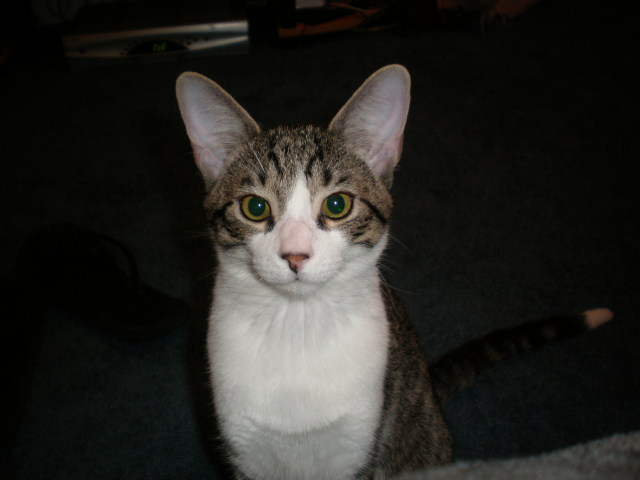 I dont understand my cat!
QuestionOliver
QUESTION: In January 2009 I got a
I dont understand my cat!
QuestionOliver
QUESTION: In January 2009 I got a
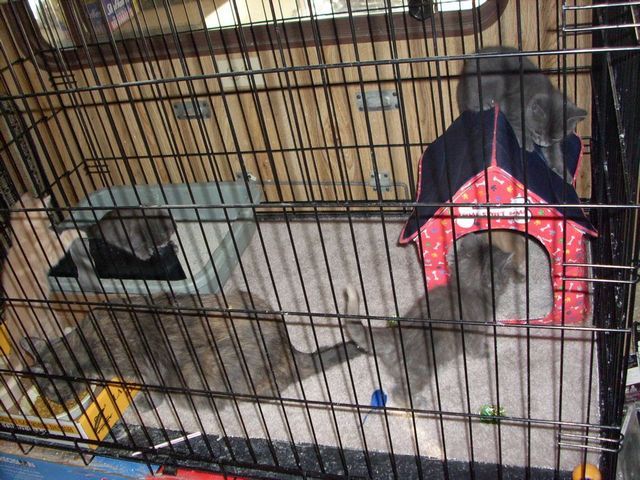 My cat liked my dogs but hates the new kitten
QuestionHi,
I have a 3 year ol
My cat liked my dogs but hates the new kitten
QuestionHi,
I have a 3 year ol
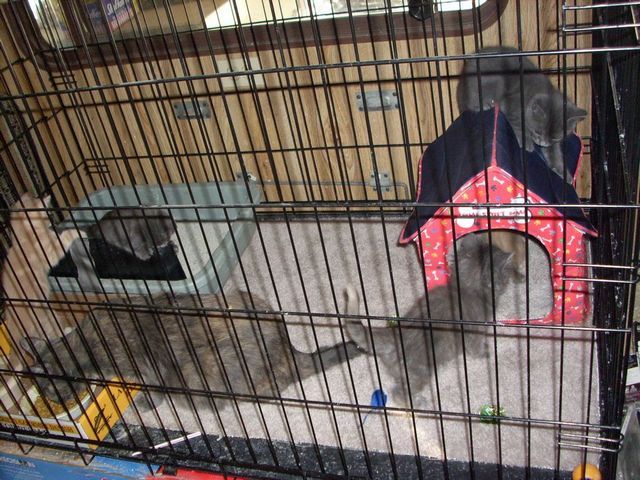 Angry cat follow up
QuestionQUESTION: Dear Tabbi,
A few days ago, a friend
Angry cat follow up
QuestionQUESTION: Dear Tabbi,
A few days ago, a friend
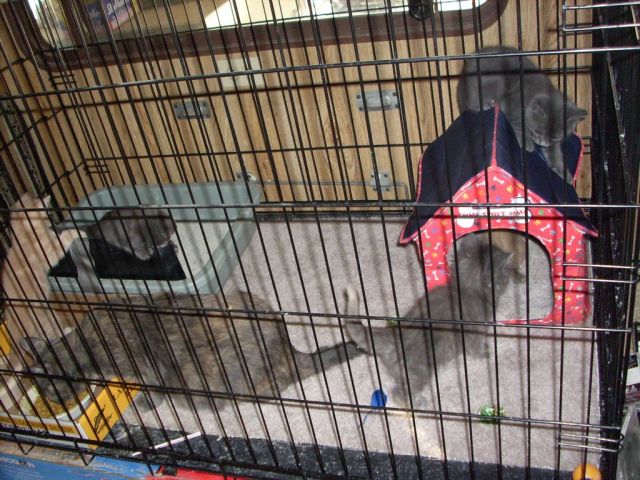 HELP DESPERATE..CAT PROBLEM
QuestionQUESTION: i got this 7mo. old barn cat 4 days a
HELP DESPERATE..CAT PROBLEM
QuestionQUESTION: i got this 7mo. old barn cat 4 days a
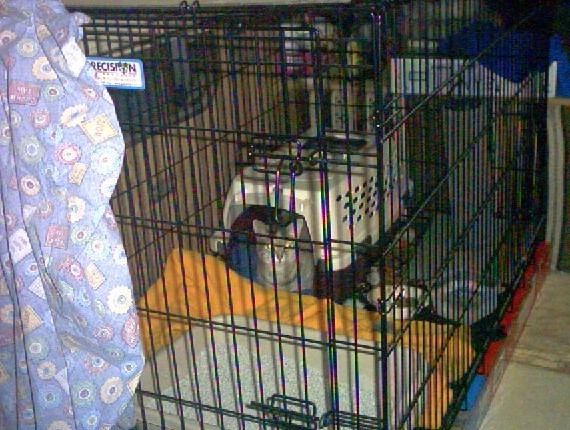 Older Kitten Attacking Younger Kitten
QuestionI just brought home a kitten that is 7 weeks ol
Older Kitten Attacking Younger Kitten
QuestionI just brought home a kitten that is 7 weeks ol